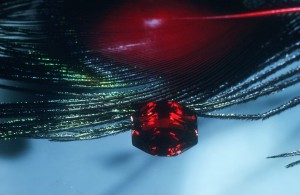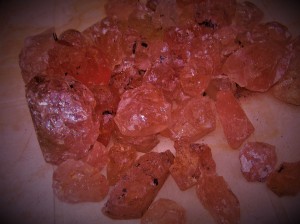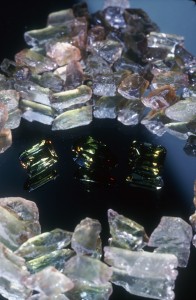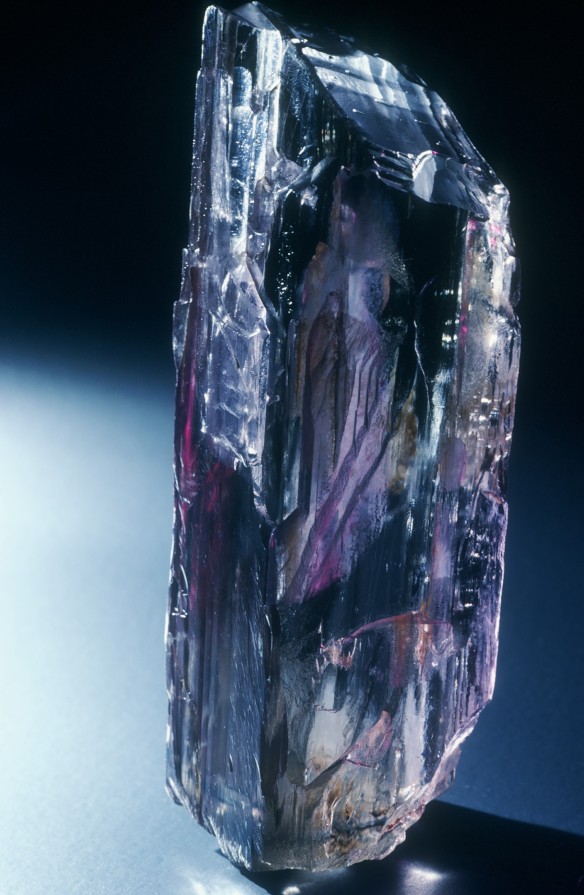
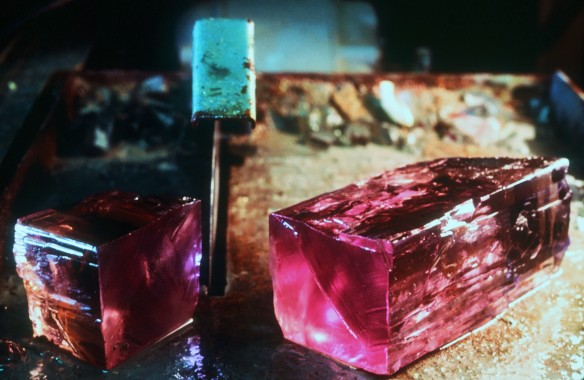
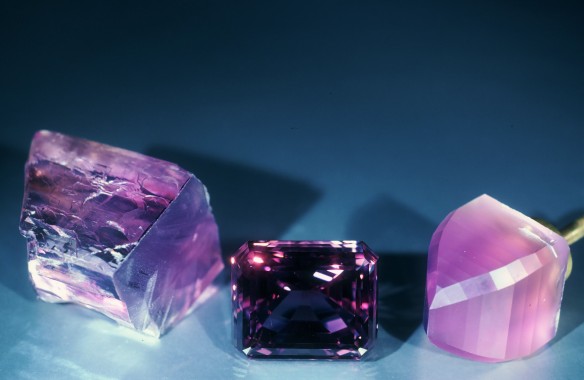
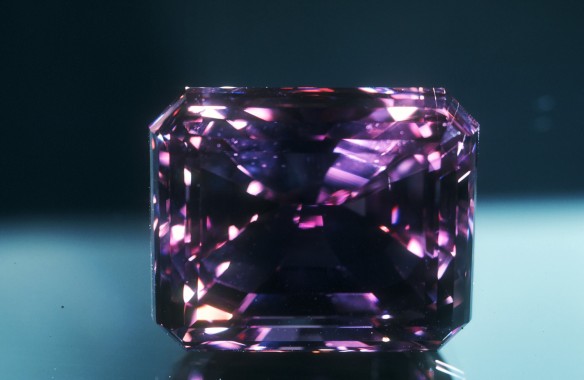
Giant 720+ carat kunzite cut by John Ramsey and featured in Gems and Gemology. Ramseygems.com
A long time ago we were offered the opportunity to purchase the large kunzite crystal shown in the photo at the very top of this post. It weighed in at about 1 kilo which equals about 5,000 carats. After days of thinking and figuring we sawed the gem as you can see in the second photo. In photo #2 the sawed pieces are sitting on the saw itself. It was a nervous time but we were lucky and the sawing came out just fine.
In the third photo you can see the sawed pieces, one finished piece, and one preformed piece attached to the “dop” which fits into the faceting machine. Finally in the fourth photo you will see the largest finished piece which came out at about 720+ carats.
The largest two pieces wound up being sold to a gem dealer one of which he told me would wind up in his personal collection.
The third largest piece wound up in the collection of a university on the East Coast. The 230 carat “baby” of the group wound up with a gem dealer.

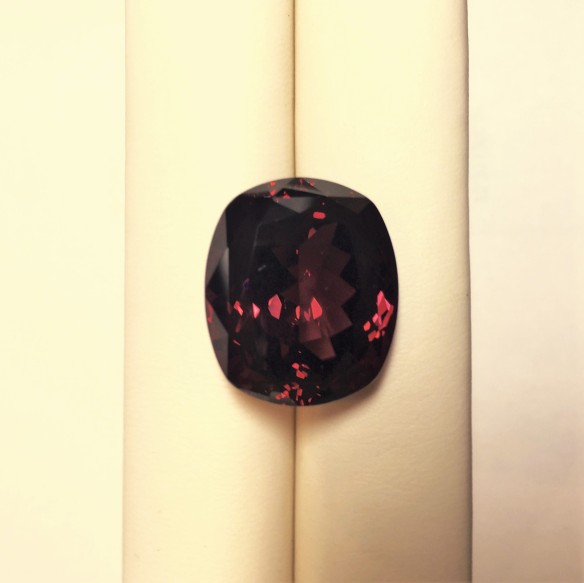
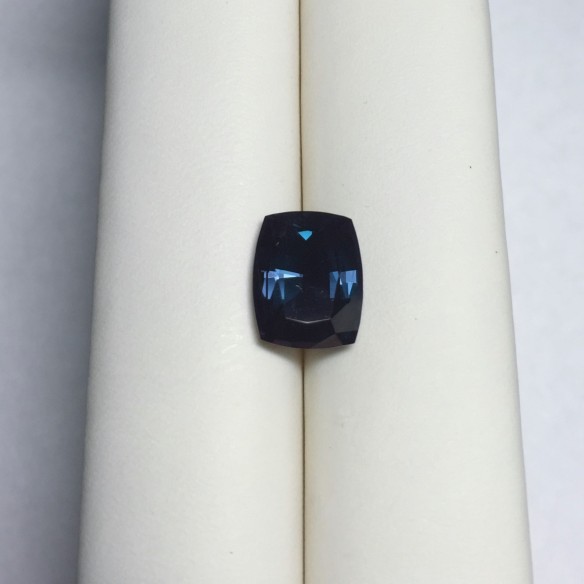
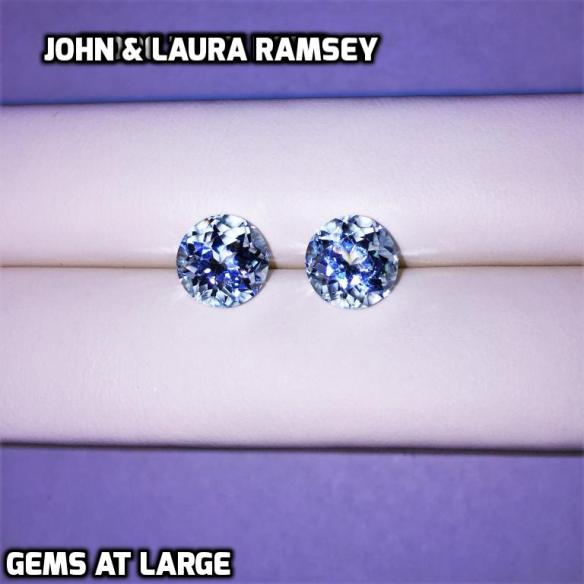 Aquamarine is an elusive gem. On a worldwide basis there are people mining for aquamarine all the time. Much labor and capital is expended to find this elusive gem. If the public knew just how difficult it is to find aquamarine and bring it to market there would be a run on the aqua market and make it even more expensive and hard to obtain. There is an old saying that for there to be a market for strawberries everybody has to taste at least one berry. Aqua is in such short supply that even March babies only infrequently own their birthstone. We at Gems At Large have been successful in bringing lots of aqua to our USA customers at better prices than they have seen before. Enjoy the photo of this pair of 9mm aquas—unusual this large in round stones. All our best
Aquamarine is an elusive gem. On a worldwide basis there are people mining for aquamarine all the time. Much labor and capital is expended to find this elusive gem. If the public knew just how difficult it is to find aquamarine and bring it to market there would be a run on the aqua market and make it even more expensive and hard to obtain. There is an old saying that for there to be a market for strawberries everybody has to taste at least one berry. Aqua is in such short supply that even March babies only infrequently own their birthstone. We at Gems At Large have been successful in bringing lots of aqua to our USA customers at better prices than they have seen before. Enjoy the photo of this pair of 9mm aquas—unusual this large in round stones. All our best